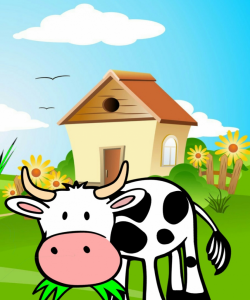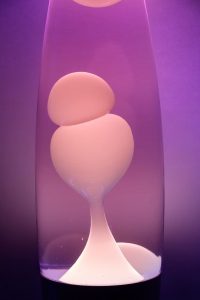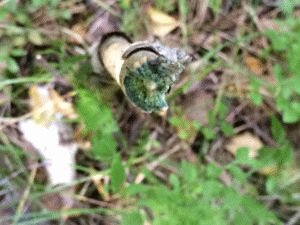För det här experimentet behöver du:
- Mjölk med 3 % fett
- 1 st tallrik
- Karamellfärg (ju fler färger ju bättre)
- Flytande diskmedel (Fiery fungerar bäst)
- 1 st bomullstops
Sedan gör du:
- Häll mjölk i tallriken så att det täcker hela botten och circa 6 mm djupt.
- Droppa lite av de olika karamellfärgerna nära varandra i mitten av tallriken.
- Häll en droppe diskmedel på en ända av bomullstopsen
- Doppa topsen mitt i mjölken och hall den där för 10-15 sekunder.
Sen kan du förstås även pröva att doppa topsen någon annan stans än I mitten, eller sätta till ytterligare en droppe diskmedel, eller använda något annat än mjölk, eller…
För fler idéer och förklaring till vad som hander rent kemiskt se pdf-fil (571 kB): regnbagsmjolken
Tack Ludvig Wellander och Experimentskafferiet för idén!
(Experimentskafferit verkar ha lagt ner sin sida och jag kan därför inte ge er länken dit.)


 Take a quarter of water and three quarters of oil in a bottle.
Take a quarter of water and three quarters of oil in a bottle.